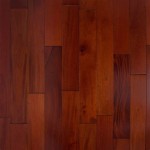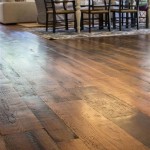If you are considering installing laminate flooring in your home, you may be wondering if you need underlayment for laminate flooring. The short answer is yes, you need an underlayment for laminate flooring. Underlayment helps to provide cushioning, sound insulation, and moisture protection for your laminate flooring, making it last longer and look better. In this article, we’ll discuss why you need an underlayment for laminate flooring, what types of underlayment are available, and how to choose the right one for your needs.
Why Do I Need Underlayment For Laminate Flooring?
Underlayment is necessary for laminate flooring because it provides a cushion between the laminate planks and the subfloor below. This cushion helps to absorb sound, making your laminate flooring quieter and more comfortable to walk on. Additionally, underlayment helps to protect your laminate flooring from moisture, which can cause warping or buckling. Without an underlayment, your laminate flooring may not last as long or look as good as it should.
What Types of Underlayment Are Available for Laminate Flooring?
When it comes to choosing an underlayment for your laminate flooring, there are several types to choose from. Some of the most common types of underlayment include foam, felt, and cork underlayment. Each type offers different benefits, such as sound insulation, moisture protection, and cushioning. Additionally, some types of underlayment are designed to be used with specific types of laminate flooring, so it’s important to read the manufacturer’s instructions before choosing an underlayment.
Foam Underlayment
Foam underlayment is made of polyethylene foam and is the most common type of underlayment used for laminate flooring. It is lightweight, easy to install, and provides good sound insulation and cushioning. Foam underlayment is typically used for floating laminate floors and is available in different thicknesses and densities. It is important to check the manufacturer’s instructions before installing foam underlayment, as some types are not suitable for use with certain types of laminate floors.
Felt Underlayment
Felt underlayment is made of a synthetic fiber and is designed to provide excellent cushioning and sound insulation. It can be used with floating laminate floors, but it is not as common as foam underlayment. Felt underlayment is not as good at moisture protection as foam, so it is important to check with the manufacturer before installing it in areas that are prone to moisture.
Cork Underlayment
Cork underlayment is made of cork and is designed to provide superior cushioning and sound insulation. It is also better at moisture protection than foam or felt underlayment. Cork underlayment is typically used for floating laminate floors and can be used with most types of laminate flooring. However, it is important to check with the manufacturer before installing it, as some types of cork underlayment are not suitable for use with certain types of laminate floors.
How to Choose the Right Underlayment for Your Laminate Flooring
When choosing an underlayment for your laminate flooring, it is important to consider the type of laminate flooring you are installing, the location of the flooring, and the amount of sound insulation and cushioning you need. It is also important to check with the manufacturer before installing an underlayment, as some types of underlayment are not suitable for use with certain types of laminate floors. Once you have chosen the right underlayment for your laminate flooring, you can rest assured that your floor will be protected from moisture, sound, and wear and tear.
Conclusion
Underlayment is essential for laminate flooring, as it provides cushioning, sound insulation, and moisture protection. There are several types of underlayment available, including foam, felt, and cork underlayment. When choosing an underlayment for your laminate flooring, it is important to consider the type of laminate flooring you are installing, the location of the flooring, and the amount of sound insulation and cushioning you need. With the right underlayment, you can rest assured that your laminate flooring will look great and last for years to come.







/Laminate-floor-install-GettyImages-154961561-588816495f9b58bdb3da1a02.jpg)

:max_bytes(150000):strip_icc()/underlayment-for-laminate-flooring-1822245_01-cad66fe5f1ab47b28c30a7d9ccfb702c.jpg)



/new-floor-installation-185270632-582b722c3df78c6f6af0a8ab.jpg)
Related Posts








